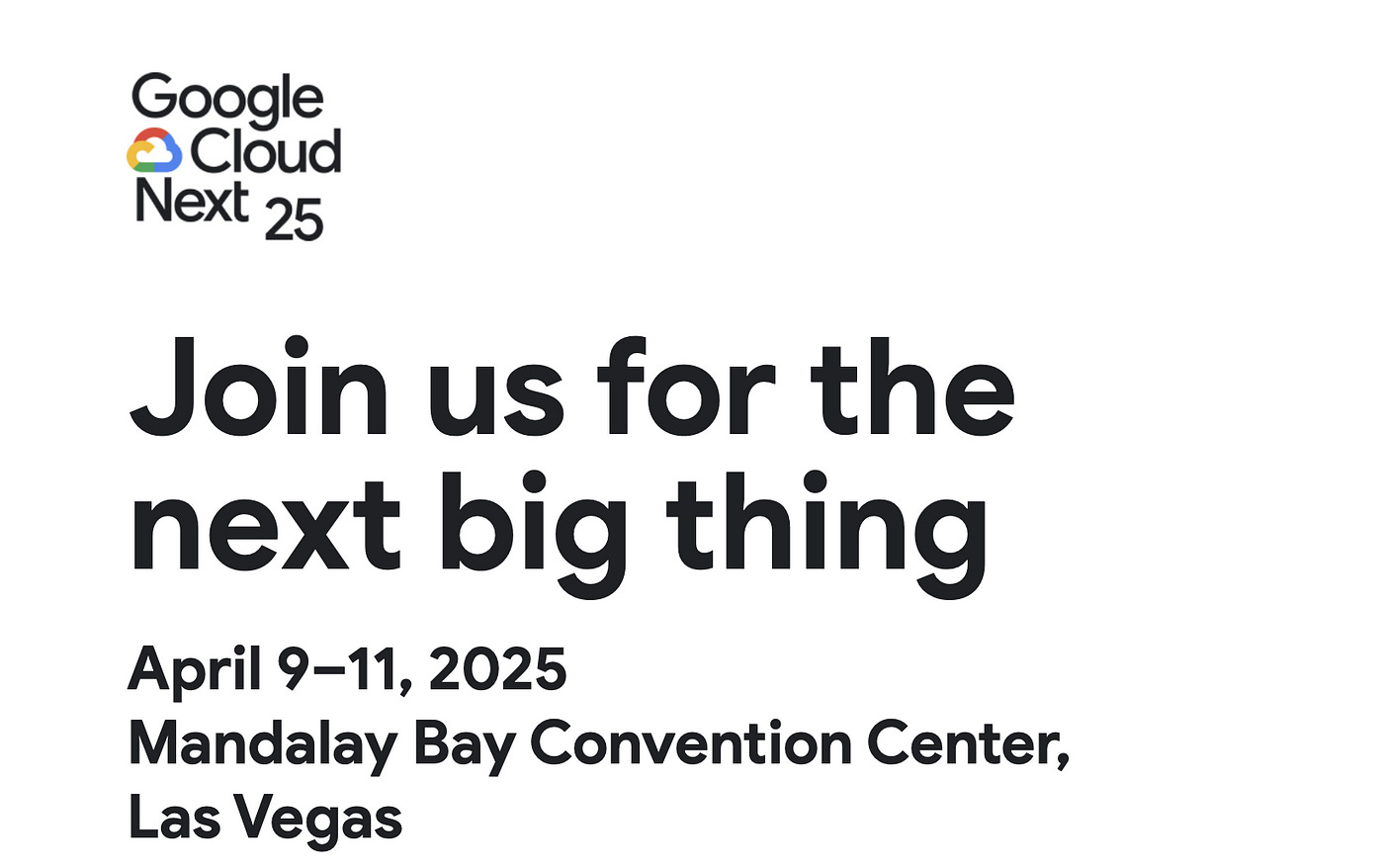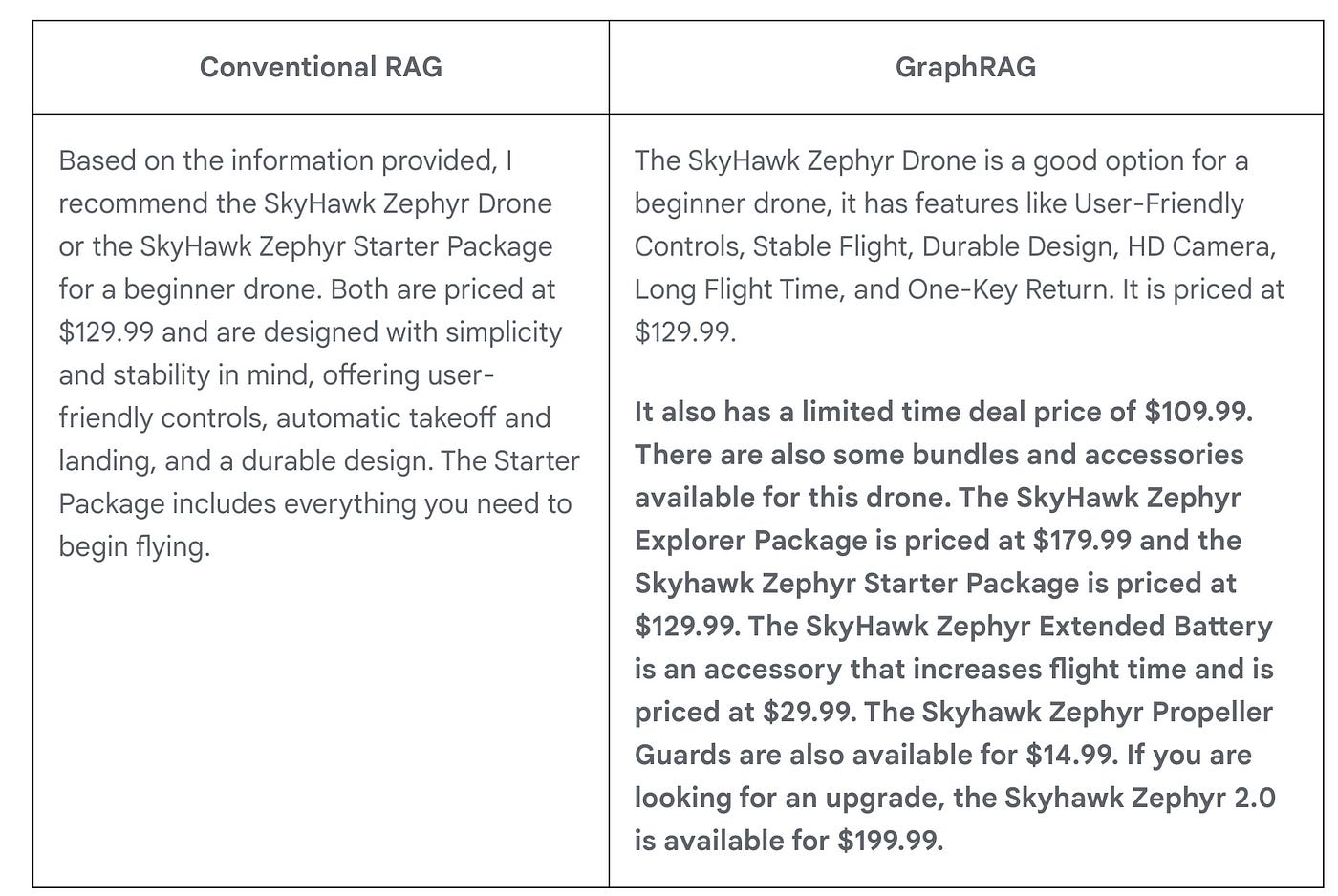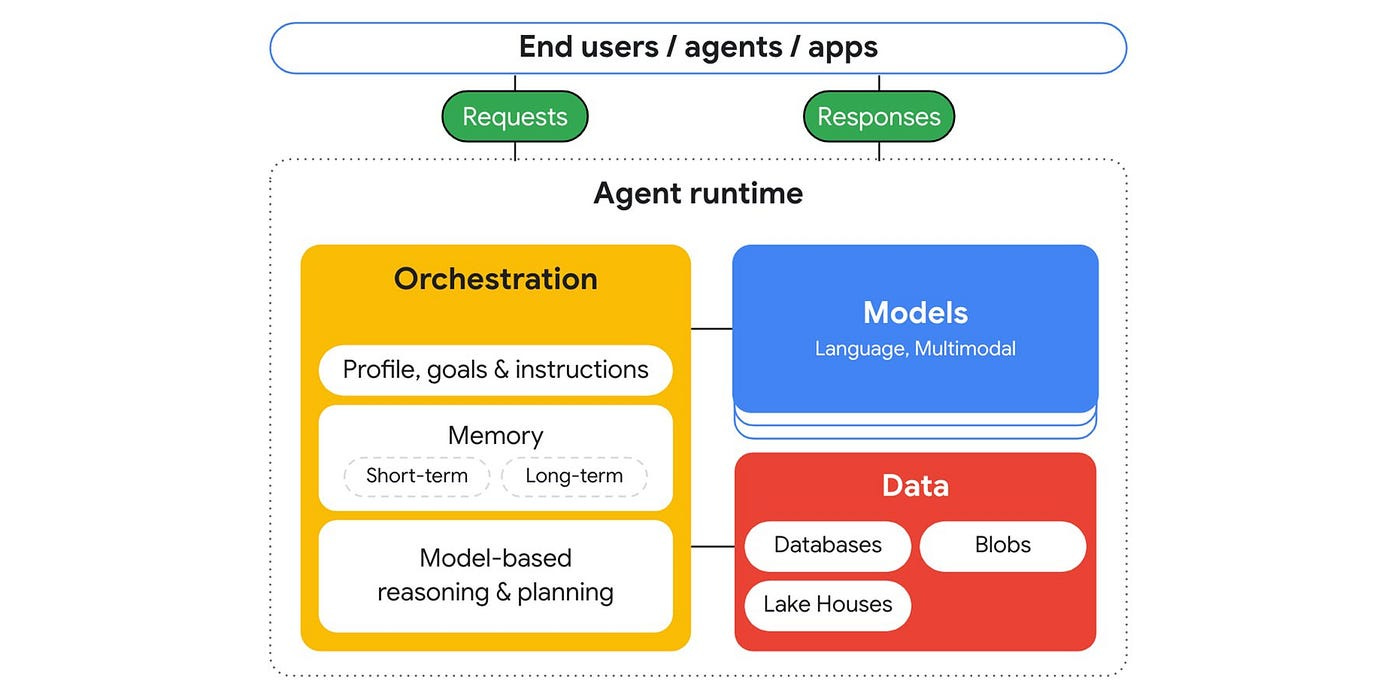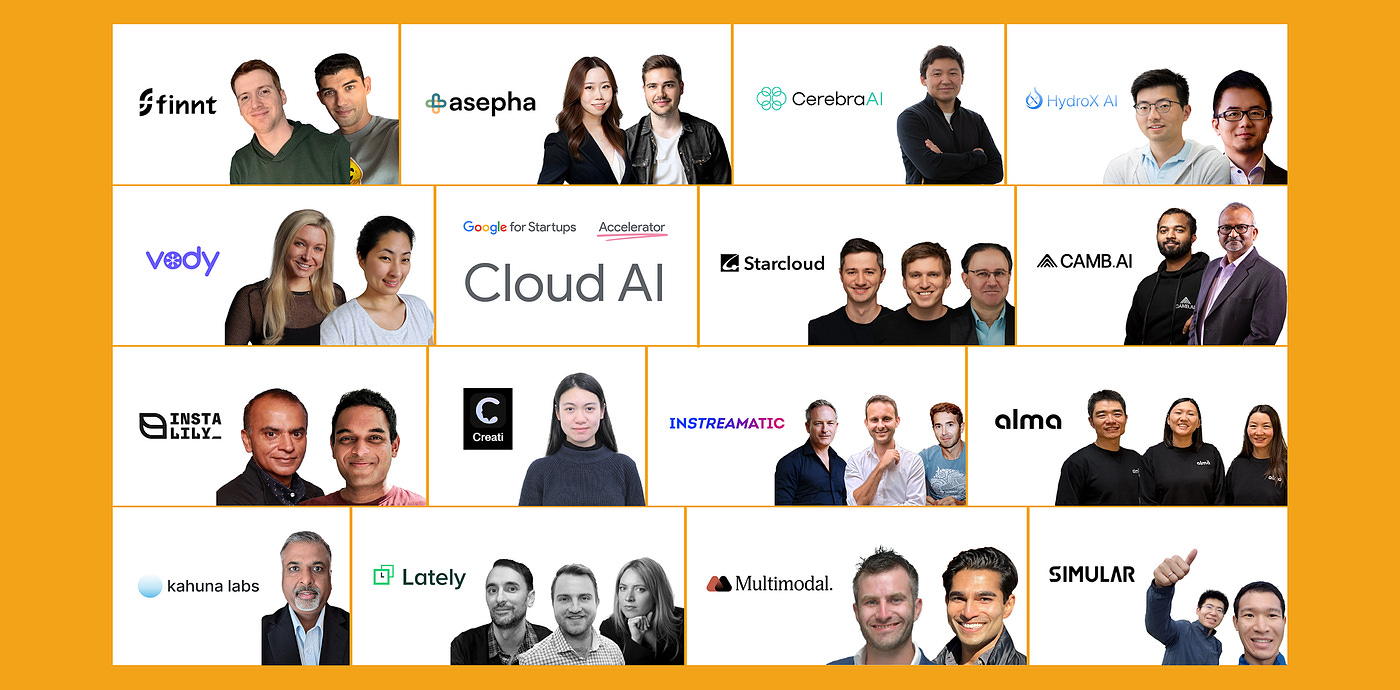Google Cloud Platform Technology Nuggets - March 16-31, 2025 Edition
Welcome to the March 16–31, 2025 edition of Google Cloud Platform Technology Nuggets. The nuggets are also available in the form of a Podcast.
The news has been fairly light on various products and services, probably due to the upcoming Google Cloud Next 2025 event, that is just a week away. We are likely to see a ton of announcements in time for the next edition of this newsletter.
Google Cloud Next 2025
We are just a week away from Google Cloud NEXT 2025. If you are attending Cloud Next 2025, here is the blog post that highlights how you can make best use of the event to jumpstart your learning journey. Even if you are not attending the event, do get started with your learning by joining the Innovators program, where you get 35 credits at no cost, every month, and use them to keep learning on Skills Boost.
Google Cloud Certification Renewal
While this does not classify typically under what is covered in the newsletter, the news around renewing your Google Cloud Certification applies to a large segment of the readers. The news is specific to your plan to renew your existing Google Cloud Certification. If you do plan to do that, you should look at the Certification Renewal page. If you are looking to renew your existing certifications in the following: Professional Cloud Architect, Associate Cloud Engineer, and Cloud Digital Leader, then you can opt for a reduced exam of 25–30 questions and at 50% discount of the typical certification fees. It seems that currently this offer is for only these specific certifications and the other certifications need you to go through giving a full exam again.
Infrastructure
At the NVIDIA GTC AI Conference, Google Cloud announced A4 VMs (built on NVIDIA HGX B200 GPUs and suitable for more general purpose AI workloads) are generally available, and that A4X VMs (accelerated by NVIDIA GB200 NVL72 GPUs and suitable for large scale AI processing/workload requirements) are in preview with general availability coming soon. Check out the blog post for more details.
There is a new Data Protection tab in Compute Engine VM instance creation. This feature allows you to configure your data protection settings when creating a VM in the Google Cloud console. You can setup backup plans, snapshot schedules, and continuous replication options for your virtual machine block storage. Check out the blog post for more details.
Additionally, there is a Protection Summary feature that offers a centralized view of backup configurations across projects. You can check out the details on this specific feature here.
Identity and Security
Google Cloud CISO Perspectives for March 2025 is out. This edition focuses on new AI Protection capabilities within Security Command Centre and advice to organizations to implement security around their AI initiatives and specifically provides five key recommendations for organisations aiming for secure artificial intelligence adoption.
If you are looking to understand how to secure AI workloads on Google Cloud, it helps to start with foundational areas like infrastructure, data, security and Responsible AI. In the blog post titled “Mastering secure AI on Google Cloud, a practical guide for enterprises”, read about not just these 4 foundational aspects but also how Vertex AI platform makes this possible. The blog post also covers Secure MLOps on Google Cloud.
Google Cloud’s Backup and Disaster Recovery (DR) service has deepened its integration with Security Command Center Enterpise to strengthen an organizations stand against ransonware attacks and threats to its backup data. The integration now caters to real-time threat detection, providing contextual information from Cloud Logging and Security Command Center artifacts, to efficient response (Google Security Operations) and also leveraging Gemini for summarization of the findings, suggesting steps for remediation and more. Check out the blog post for more details.
AI and Machine Learning
I hope you continue to read this newsletter to get your share of updates on Google Cloud but when there is an interesting new summary post appearing elsewhere, I am sure to highlight. One such post that has caught my attention is “What we announced in AI this month”. This could be a good summary to read every month. Check out the March edition of this post.
Data Analytics
BigQuery Studio now supports Bigquery repositories. This integration allows users to connect to platforms such as GitHub and GitLab and perform common Git operations like committing, pushing, and creating pull requests within the BigQuery interface. Manual code transfers and other inefficient back and forth code copying practices should be a thing of the past. Check out the blog post for more details.
Cloud Composer 3, the latest version of our fully managed Apache Airflow service is now in general availability (GA). Check out the blog post for specific features in this release, a few key ones being simplified networking, less focus on underlying infrastructure, enhanced security posture and more.
Databases
What is model endpoint management within AlloyDB, AlloyDB Omni, and Cloud SQL for PostgreSQL? Think of it as the ability to integrate generative AI models, hosted on various platforms including Vertex AI, OpenAI, Hugging Face, and Anthropic, directly into their SQL workflows. This is typically enabled via the "google_ml_integration" extension which you have to register first and then you can invoke these models. Check out the blog post that highlights 3 examples:
Generating embeddings with Open AI embeddings models
Leveraging Gemini to evaluate vector search results
Running sentiment analysis to analyze user sentiment
Consider large amounts of relational data, interconnected relationships between the entities and you have been tasked to create an AI application that can search through these data stores. Specifically within Google Cloud, you could potentially look at Spanner Graph with the LangChain framework to create advanced Graph Retrieval Augmented Generation (GraphRAG) applications. GraphRAG is considered to provide richer, more informative answers by considering relationships between data points and in these specific situations is expected to be better than conventional RAG approaches. Check out the blog post that discusses this and demonstrates a retail application example that demonstrates how to construct, store, and query a knowledge graph using Spanner Graph and LangChain.
Developers and Practitioners
Looking to build out Agentic applications? Most of us are trying to figure that out but given that this path requires models, tools, data stores, applications, is their a tech stack (an opinionated one is fine too) that can help put all this together. Check out this blog post that starts off with the basics of what an Agentic Application Architecture and its building blocks look like. It then dives specifically that if you were to build this and integrate with Google Cloud databases, then what is the proposed solution. It specifically also doubles down on Gen AI Toolbox, which is an open-source service designed to help application developers connect AI applications to production databases. It simplifies the process of building, deploying, and managing advanced AI tools that can securely query databases with features like observability, scalability, and manageability. The toolbox currently supports popular open-source databases like PostgreSQL, MySQL, Neo4j, and Hypermode, as well as Google Cloud databases like AlloyDB (+Omni), Spanner, and Cloud SQL.
Gaming
Is there an area that Generative AI has not made an impact on? This time we are specifically refering to online gaming with a large number of users. The blog post highlights how integrating generative AI models with scalable cloud gaming infrastructure, specifically Google Kubernetes Engine (GKE) and Agones, can enhance player experiences without compromising performance. The blog post highlights how Lexitrail, a language learning game was architected in which they leveraged Gemini Imagen models for interactive hints, Agones for game session management, Open Match for matchmaking, and GKE for scalability.
Storage and Data Transfer
What do YouTube, Gmail, BigQuery and Cloud Storage have in common? While you can say that they deal with vast amounts of storage as a probably answer, its interesting to note that they all depend on Collosus, Google’s foundational distributed storage system. Check out the blog post that provides insights on how its capabilities support Google Cloud’s changing business and what new capabilities have been added in this foundational layer, specifically around support for SSD.
Google for Startups Cloud AI Accelerator
This accelerator program is a new ten-week accelerator class for high potential AI first technology startups based in the U.S. and Canada. Its interesting to take a look at the startups, what problems they are focused on to solve using AI and more. Check out the first cohort of Startups selected for this program.
Write for Google Cloud Medium publication
If you would like to share your Google Cloud expertise with your fellow practitioners, consider becoming an author for Google Cloud Medium publication. Reach out to me via comments and/or fill out this form and I’ll be happy to add you as a writer.
Stay in Touch
Have questions, comments, or other feedback on this newsletter? Please send Feedback.
If any of your peers are interested in receiving this newsletter, send them the Subscribe link.















